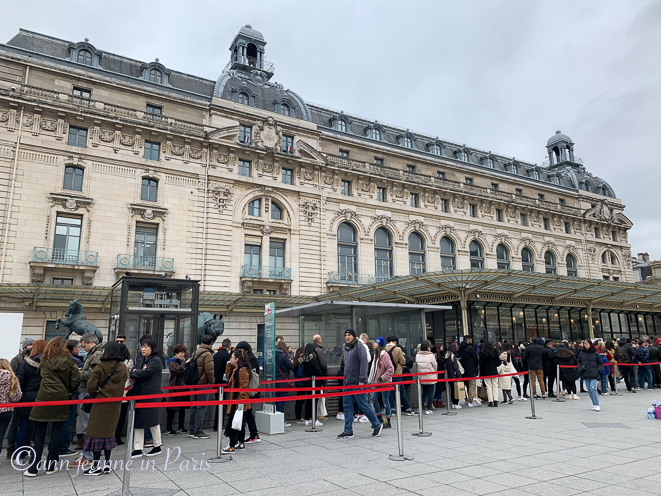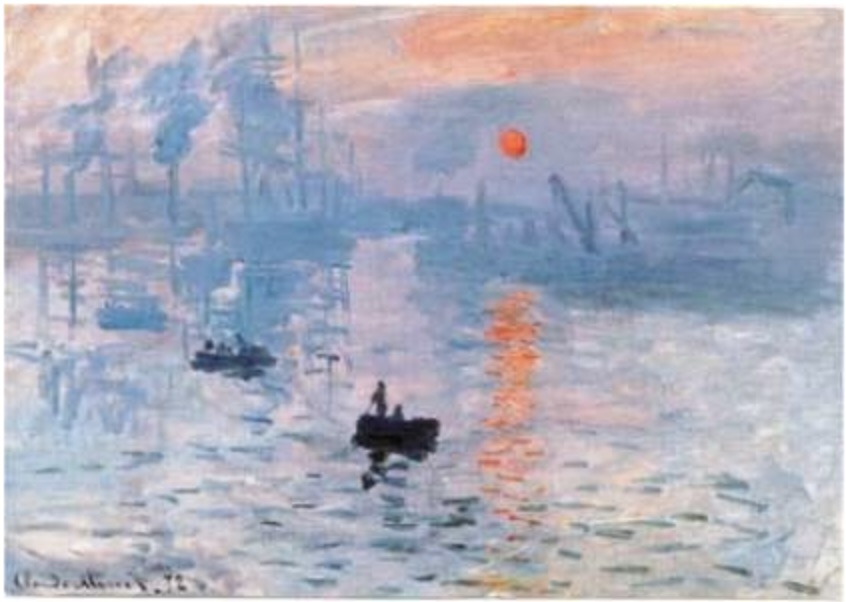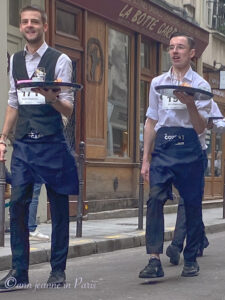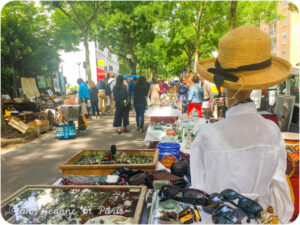Some words of history


Orsay, train station (around 1900) and Orsay nowadays
In the 19th century, a railway station, the “Musée d’Orsay” was a railway station.
This train station was built in 1900 and definitely closed in the mid 20th century (in 1958) after having already abandoned the main lines in 1939.
The building reopened as the “Musée d’Orsay” in 1986.
It displays works of art dating from 1848 to 1914 (What’s displayed starts where the Louvre ends) : paintings, sculptures, furniture and photography. It’s the world’s largest collection of impressionist and post-impressionist art work
The impressionist and the post impressionist artists

“Printemps à Giverny” by Claude Monet, 1886 (Orsay Museum)
The museum displays fine impressionist and post-impressionist collections and let a lot of space to the earlier Realists
The impressionist artists: Claude Monet, Edouard Manet, auguste Renoir, Edgar Degas, Paul Cezanne, Camille Pissaro, Frederic Bazille, Gustave Caillebotte, Mary Cassatt, Alfred Sisley, Berthe Morisot…
The post-impressionist artists :
Vincent Van Gogh, Paul Gauguin, Henri de Toulouse Lautrec, Georges Seurat, Pierre Bonnard, Paul Gauguin, Paul Signac…
Orsay also offers temporary exhibitions
The impressionism movement :

” Impression soleil levant” Claude Monet
From the mid 19th century, the artists started to break with the academic values of the past.
The name “impressionism” comes from a painting by Claude Monet : “Impression soleil levant ” (“Impression sunrise »), a view from Le Havre in the mist from 1872. Sunrise depicts the port of Le Havre at sunrise ).
The impressionist artists painted an impression of what they were watching looked like to them.
The movement has no real founder though Manet and Courbet inspired many of the younger artists. They aimed to capture the impression of what the eye sees at a given moment.
Their favorite subjects were : landscapes, and scenes from the urban life. In 1863, Manet’s “Le déjeuner sur l’herbe” was rejected by the official salon of that year
The leading neo-Impressionist was Georges Seurat.
It took later generations to fully appreciate the work of the Impressionists. Paul Cezanne was rejected all his life. Edgar Degas sold only one painting to a museum and Sisley died unknown. Only Renoir and Monet were ever acclaimed in their lifetimes.
You'll find in Orsay museum :
Among the art you’ll find in Orsay :
- Ground floor : paintings prior to 1870
- The museum central aisle : an assorted selection of sculptures of the middle of the 19th century
- 1st level : Sculptures dating back to the early 20th c.
- Level 5 : the most famous impressionist works and Van Gogh and Gauguin’s works
Practical details
Le “Musée d’Orsay” is located on the left bank of Paris, in the 7th arrondissement.
1 rue de la Légion d’Honneur, 75007 Paris +33 (0) 1 40 49 48 14
9.30 am – 6pm Tues-Sun (9.45pm on Thursdays) Closed on Mondays, on May 1 and on Dec 25
- Metro stop : Solférino
- RER C : Musée d’Orsay stop
- Buses : 24, 68, 69, 84 (other lines possible too)
- Batobus stop : « Musée d’Orsay » nearby
- Ticket available online musee-orsay.fr (booking on line and in advance is recommended). Or available on site (Last ticket sold 1 hour before closing.)
- Combined tickets with Musée Rodin also available
- No entry fee on the first Sunday of each month.
- -18 : free
- Restaurants : Café de l’Ours (Ground floor), “Le restaurant » ( with its golden decoration and its sparkling chandeliers, located at level 1) and le “Café Campana (level 5)
- You can take photos inside the museum (but with no flash)
- Audio guides are available in English (and in French, German, Spanish, Italian, Portuguese, Japonese, Chinese and Russian for 5 euros
My recommendations :
- A must-see especially if you are an impressionist art lover. It might become your favorite museum in Paris. The building itselfis worth seeing and the collection of impressionist and post impressionist art is fantastic.
- Buying your tickets on line is highly recommended. If you haven’t got a ticket, you might wait more than one hour.
- Choose to visit the “Musée d’Orsay” at the opening time.(for a more peaceful visit). Many visitors and the lines can be quite large. Better avoiding the weekend
- Prepare your visit before you come : look at the map of the museum and choose the artists and paintings you want to see first. Allow a minimum of 2 hours for your visit. But you could easily spend an entire day looking at everything !
- Go right away to the 5th level (as soon as you enter the building ) before too many visitors are there : this is at theis 5th level that the most famous impressionist works are located. This is also where Van Gogh and Gauguin’s works are located
- Don’t miss the wonderful giants clocks including the golden huge clock
- Also a great view over central Paris (from the terrace at the 5th level or through the large glass clock !).
- You can take pictures inside the museum. A great news for all the photographers !
- Other paintings by Monet are exhibited in Paris or nearby Paris : at “Musée Marmottan Monet”, “Orangerie Museum” and “Giverny”




